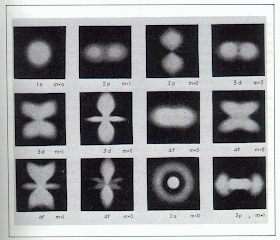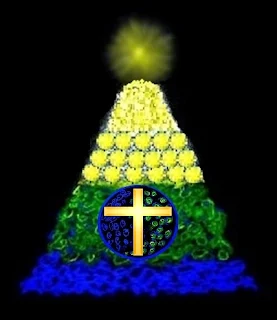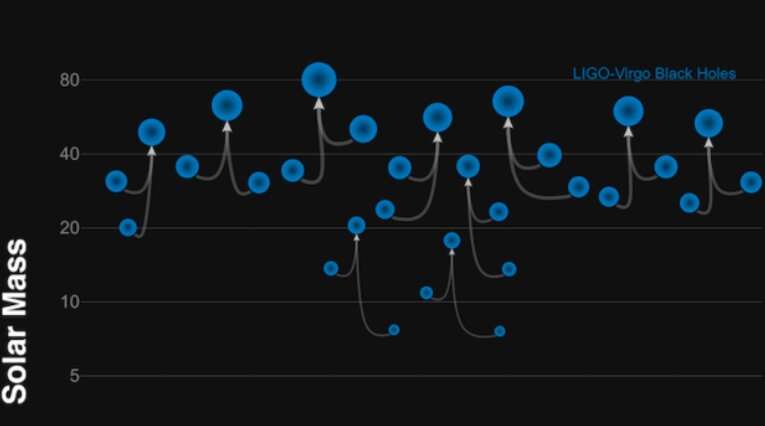Another friend of the blog forwarded this mind-blowing article to me. Thank you, friend! This reprinted article suggests that neurons in the brain do their computations in up to 11 dimensions with the aid of distributed "black holes" of unknown dimensionality. Using computer modeling and algebraic topology, scientists have discovered that emerging neurons arrange themselves in "cliques" that quickly form multi-dimensional structures and, just as quickly, dissolve them. The more neurons that crowd around the "black hole," the higher the dimensionality of the transitory object.
Here's the reprint. Go to the end to hear my Gnostic Explanation of this phenomenon.
Scientists Reveal a Multidimensional
Universe Inside the Brain
Scientists
have found the Human Brain can create structures in up to 11 dimensions
Image
Credit: Blue Brain Project.
Conducted by the Blue Brain Project, scientists discovered
fascinating new details about the complexity of the human brain.
“We found a world that we had never imagined,” explained
neuroscientist Henry Markram, director of Blue Brain Project and
professor at the EPFL in Lausanne, Switzerland.
A universe of multidimensional structures inside the brain
The image attempts to
illustrate something that cannot be imaged — a universe of multi-dimensional
structures and spaces. On the left is a digital copy of a part of the
neocortex, the most evolved part of the brain. On the right are shapes of
different sizes and geometries in an attempt to represent structures ranging
from 1 dimension to 7 dimensions and beyond. The “black-hole” in the middle is
used to symbolize a complex of multi-dimensional spaces, or cavities.
Researchers at Blue Brain Project report groups of neurons bound into such
cavities provide the missing link between neural structure and function, in
their new study published in Frontiers in Computational Neuroscience. Image
Credit: Blue Brain Project.
“There are tens of millions of these objects even in a small
speck of the brain, up through seven dimensions. In some networks, we even
found structures with up to eleven dimensions,” Markram added.
By studying the human brain, researchers discovered that traditional
mathematical views were not applicable and ineffective.
“The mathematics usually applied to study networks cannot detect
the high-dimensional structures and spaces that we now see clearly,” Markram
revealed.
Instead, scientists decided to give algebraic topology a go.
Algebraic topology is a
branch of mathematics that uses tools from abstract algebra to study topological spaces.
Scientists from the Blue Brain Project were assisted by
mathematicians Kathryn Hess from
EPFL and Ran Levi from
Aberdeen University in applying this discipline in their new study.
“Algebraic topology is like a telescope and
microscope at the same time. It can zoom into networks to find
hidden structures – the trees in the forest – and see the empty spaces – the
clearings – all at the same time,” explained professor Hess.
The Human Brain can create structures in up to 11 dimensions
The scientists discovered that the structures inside the brain
are created when a group of neurons – cells that transmit signals in the brain
– form something referred to as a clique. Each
neuron is connected to every other neuron in the group in a unique way,
creating a new object. The more neurons there are in a clique, the higher the ‘dimension’ of the
object.
Algebraic topography allowed the scientists to model the
structures within a virtual brain, created with the help of computers. They
then carried out experiments on real brain tissue, in order to verify their
results.
By adding stimuli into the virtual brain, the researchers found
that cliques of progressively HIGHER dimensions assembled. Furthermore, in
between the cliques, scientists discovered cavities.
“The appearance of high-dimensional cavities when the brain is
processing information means that the neurons in the network react to stimuli
in an extremely organized manner,” explained Levi.
“It is as if the brain reacts to a stimulus by building then
razing a tower of multi-dimensional blocks, starting with rods (1D), then
planks (2D), then cubes (3D), and then more complex geometries with 4D, 5D,
etc.”
“The progression of activity through the brain resembles a
multi-dimensional sandcastle that materializes out of the sand and then
disintegrates,” he added.
The new data about the human brain offers unprecedented insight
into how the human brain processes information.
However, the scientists have said that it still remains unclear
as to how the cliques and cavities form in their highly specific ways.
The new study may eventually help scientists uncover one of the
greatest mysteries of neuroscience: where does the brain ‘store’ its memories.
“They may be ‘hiding’ in high-dimensional cavities,” Markram
concluded.
*********************
Holy moley! My Gnostic mind tells me this multi-dimensionality is our natural, true state of existence. Our perception of a 3 or 4-D world is a "flattened" representation of our larger multi-dimensionality. So, while we may perceive things around us in a relatively simplified state, in order for our minds to process and make full use of the information it must dip into the black hole well of multi-dimensionality. We are unaware of this because when the information comes back out to us it again reverts to ordinary perception. It is this return to the ordinary world that collapses the multi-dimensional structure, as observed by the model.
Upon further reflection and discussions, the findings are no surprise, because the arrangement of neurons into transitory multi-dimensional structures reflects their true aeonic nature. In terms of my interpretation of the Gnostic Gospel, the aeons live within a tight, hierarchical structure with a jelly-like consistency, kind of like a glorious precursor to slime mold. These aeons are expressions of the Son's diversity, and they dwell in the metaversal matrix outside our time-space continuum. The aeons of the Pleroma share one mind, one vision, and one intention. This glorious mind is known as the Holy Spirit.
According to the Gnostic Gospel Illuminated, all creatures on this planet, from single-celled bacteria through every living creature and plant, are the offspring of these aeons, sent down to material form as we find ourselves now, in an attempt to clean up a cosmic accident known as The Fall.
You can read all about it by visiting my other blog, A New Gnostic Gospel.
According to the Gnostic Gospel Illuminated, the multi-dimensional region that the transitory structures pointed out in the article are communicating with are the aeons of the pleroma. This is possibly what is meant by Biblical references to angels keeping watch--these aeons are the multi-dimensional intelligences at the other end of the wire. We are their fruit.
Thoughts?















